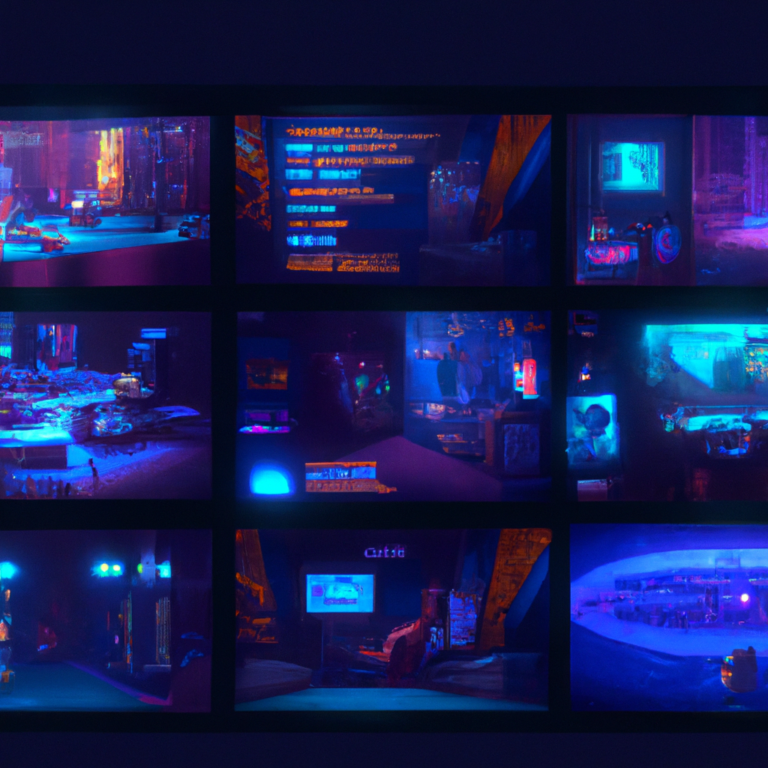“From Pixels to Masterpieces: The Evolution of Video Game Development Through the Ages”
Title: A Journey Through Time: The History of Video Game Development
Introduction
Video game development has come a long way since the early days of arcade machines and pixelated graphics. From the humble beginnings in laboratories to the global phenomenon it has become today, the history of video game development is a story of innovation, creativity, and passion. In this blog post, we’ll take a trip down memory lane to explore the beginnings of this fascinating industry and how it has evolved over the years.
The Birth of Video Games (1950s-1960s)
The genesis of video game development can be traced back to the 1950s when scientists and engineers began experimenting with computer technology for gaming purposes. Early pioneers in the field include William Higinbotham, who created a simple tennis game called “Tennis for Two” in 1958, and Steve Russell, who in 1962 developed “Spacewar!”, the first widely recognized video game.
These early video games were not just novelties; they served as a means for researchers to explore the capabilities of the emerging computing technology. These games were predominantly played on large, room-sized computers and were not yet available to the general public.
The Era of Arcades and Home Consoles (1970s-1980s)
In the 1970s, the video game industry took off with the advent of arcade machines, which allowed gaming to become more accessible to the public. Nolan Bushnell and Ted Dabney founded Atari in 1972, releasing the widely popular “Pong” the same year, which took the world by storm and laid the foundation for the arcade gaming industry.
The late 1970s and early 1980s were also marked by the introduction of home video game consoles like the Atari 2600, Magnavox Odyssey, and Intellivision. These consoles brought gaming into people’s living rooms, sparking a massive boom in the industry. During this time, iconic games such as “Pac-Man,” “Donkey Kong,” and “Space Invaders” became household names and graced the screens of millions.
The Rise of the Japanese Gaming Giants (1980s)
The 1980s were characterized by the rise of Japanese gaming giants, such as Nintendo and SEGA. In 1985, Nintendo released the Nintendo Entertainment System (NES), which revitalized the video game industry after the infamous market crash of 1983. The NES introduced the world to the now-iconic “Super Mario Bros.” and “The Legend of Zelda,” which would become cornerstones of the gaming industry and establish the foundations for modern gaming.
SEGA entered the fray with the release of the SEGA Master System in 1986, alongside their iconic game character, Sonic the Hedgehog. This marked the beginning of the console wars, with SEGA and Nintendo vying for dominance in the rapidly growing industry.
The Emergence of 3D and Online Gaming (1990s)
The 1990s were marked by significant technological advancements, which allowed for the development of 3D graphics, more complex game mechanics, and the birth of online gaming. The release of the Sony PlayStation in 1994 and the Nintendo 64 in 1996 revolutionized gaming with their 3D capabilities, bringing forth legendary titles like “Tomb Raider,” “Final Fantasy VII,” and “The Legend of Zelda: Ocarina of Time.”
Meanwhile, the rise of the internet paved the way for the first online multiplayer games, like “Quake” and “Ultima Online,” enabling gamers to connect and play with others from around the world.
Modern Gaming and Beyond (2000s-Present)
The 21st century has seen the gaming industry continue to innovate and evolve at a breakneck pace. The release of consoles such as the PlayStation 2, Xbox, and Nintendo’s GameCube, followed by the PlayStation 3, Xbox 360, and Wii, have expanded the gaming landscape, and the introduction of mobile gaming has made gaming more accessible than ever before.
Additionally, the rise of indie game development, enabled by platforms like Steam, has allowed smaller developers to create and distribute their games, fostering a diverse and creative gaming landscape that caters to a wide range of tastes and preferences.
Conclusion
The history of video game development is a testament to the power of innovation, creativity, and human passion. As we continue to push the technological envelope, it’s exciting to imagine what the future holds for this ever-evolving industry. From virtual reality to artificial intelligence, the possibilities are endless, and we can’t wait to see what new gaming experiences lay in store.





